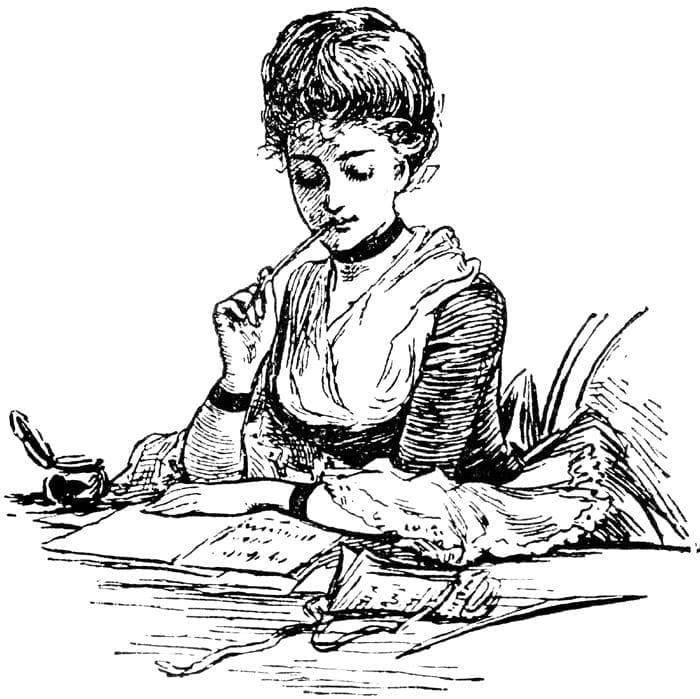Type of Rhymes
Type of Rhymes
——————————————————————–
BROKEN RHYME
this is where one rhyming word or words matches up with a piece of another.
Examples: eat, meeting – proposal, suppose – lover, coverlet – deception, exceptional – shall win, palindrome – versatility – perverse humility
—–
CHAIN RHYME
A rhyme scheme in which a rhyme in a line of one stanza is used as a link to a rhyme in the next stanza.
—–
CROSS RHYME
Occurs when the syllable at the end of a line rhymes with a word in the middle of a line before or after it.
Commonly used in Welsh forms
Example: The sound flung on the air
The song is sung
(the cross rhyme is flung and sung)
—–
DIALECT RHYME
rhyme that depends on pronounciation based on historical period or region
Examples: again – pain vs. again – pen
—–
DIMINISHING RHYME
A rhyme using words or parts of words that are pronounced identically but have different meanings
Examples: Made, Maid – Report, Port – Emotion, Motion – Ocean, Shun
—–
DISYLLABIC RHYME
A rhyme in which the two last syllables of words share the same sound.
Example: Emotion, Motion
—–
END RHYME
(Also known as SIGHT RHYME)
The near duplication of sounds that takes place at the ends of lines. End rhyme is the most common type of rhyme.
Examples: Heat, Neat, Feet, Greet, Sweet
—–
EYE RHYME
Rhyme in which the ending of words are spelled alike; in most instances were pronounced alike, but not always are they pronounced alike.
Example: Lint, Pint, Sprint
—–
FEMININE RHYME
A rhyme that occurs when the final syllable in Unstressed (normally used with multi-syllable words)
Examples: pleasure/leisure, longing/yearning
—–
FORCED RHYME (pos)
(Also known as WRENCHED RHYME)
Occurs when the poet gives the effect of seeming to surrender helplessly to the exigencies of a difficult rhyme.
Example: Farewell, Farewell, you old rhinocerous
I’ll stare at something less prepocerous.
– Ogden Nash
—–
FORCED RHYME (neg)
Version 2
Occurs when the reader believes that in the context of using a rhyming word because it rhymes instead of because of its meaning.
Example: The cat crossed the grass.
I was late for class.
—–
HEAD RHYME
Rhyme between syllables at the beginnings of lines of poetry
Example: Sung is the song
flung upon the air
(Sung and Flung)
—–
IMPERFECT RHYME
(also known as PARTIAL, HALF, NEAR, OFF, SLANT and APPROXIMATE RHYME)
A rhyme in which the vowels are either approximate or different; and occasionally, even the rhymed consonants are similar rather than identical.
Example: Dry, Died (“i”) or Grown, Moon (“n”)
—–
INTERLACED RHYME
A rhyme between a syllable or syllables in the center of a line with a syllable or syllables in the center of the preceding or following line. Example: The song is sung, the bell heard
It is flung on the air
(Sung and Flung)
—–
INTERNAL RHYME
(also known as MIDDLE and LEONINE RHYME)
Involves rhyming sounds within the same line.
Example: “Sister, my sister, O fleet, sweet, swallow.” –Swinburne
Example 2:Where I once had a Bill to drive back my chill
—–
LINKED RHYME
A rhyme between the last syllable or syllables of a line with the first syllable or syllables of the following line.
Example: The song is sung
Flung upon the air
(Sung and Flung)
—–
MASCULINE RHYME
A rhyme that occurs when the final syllable is Stressed (can be in either single or mulit-syllable words)
Examples: desire/fire, observe/deserve, cat/hat
—–
MOSAIC RHYME
It’s a multisyllabic rhyme where one or both of the rhyming agents are more than one word. Is commonly used for comic effect.
Example: dismay, this may – unintended, pun intended
—–
NURSERY RHYME
A childrens poem written in rhyming verse.
—–
PERFECT RHYME
(also known as FULL, CLOSE or TRUE RHYME)
Rhyme in which the final accented vowels of the rhyming words and all succeeding sounds are identical while preceding sounds are different. In perfect rhyme, the correspondence of rhymed sounds is exact.
(this type can be found at RhymeZone.com)
—–
RICH RHYME
A rhyme where the identical sound in the consonants immediately preceding the accented vowel as well as in the sounds following it.
Example: Cyst, Persist, Insist
—–
TAIL RHYME
(Also known as CAUDATE RHYME)
a verse form in which rhyming lines, usually a couplet or triplet, are followed by a tail, a line of shorter length with a different rhyme; in a tail-rhyme stanza, the tails rhyme with each other.
—–
TRIPLE RHYME
A rhyme involving three syllables in which the words have the same sound
Example: sanity, vanity
—–

Contact Lady Kathleen
Please use the form below to contact me about Poetry
